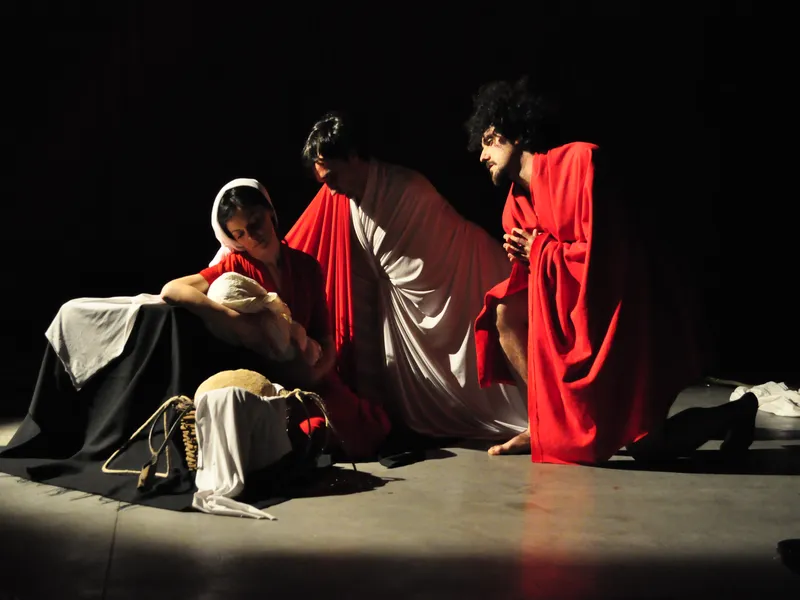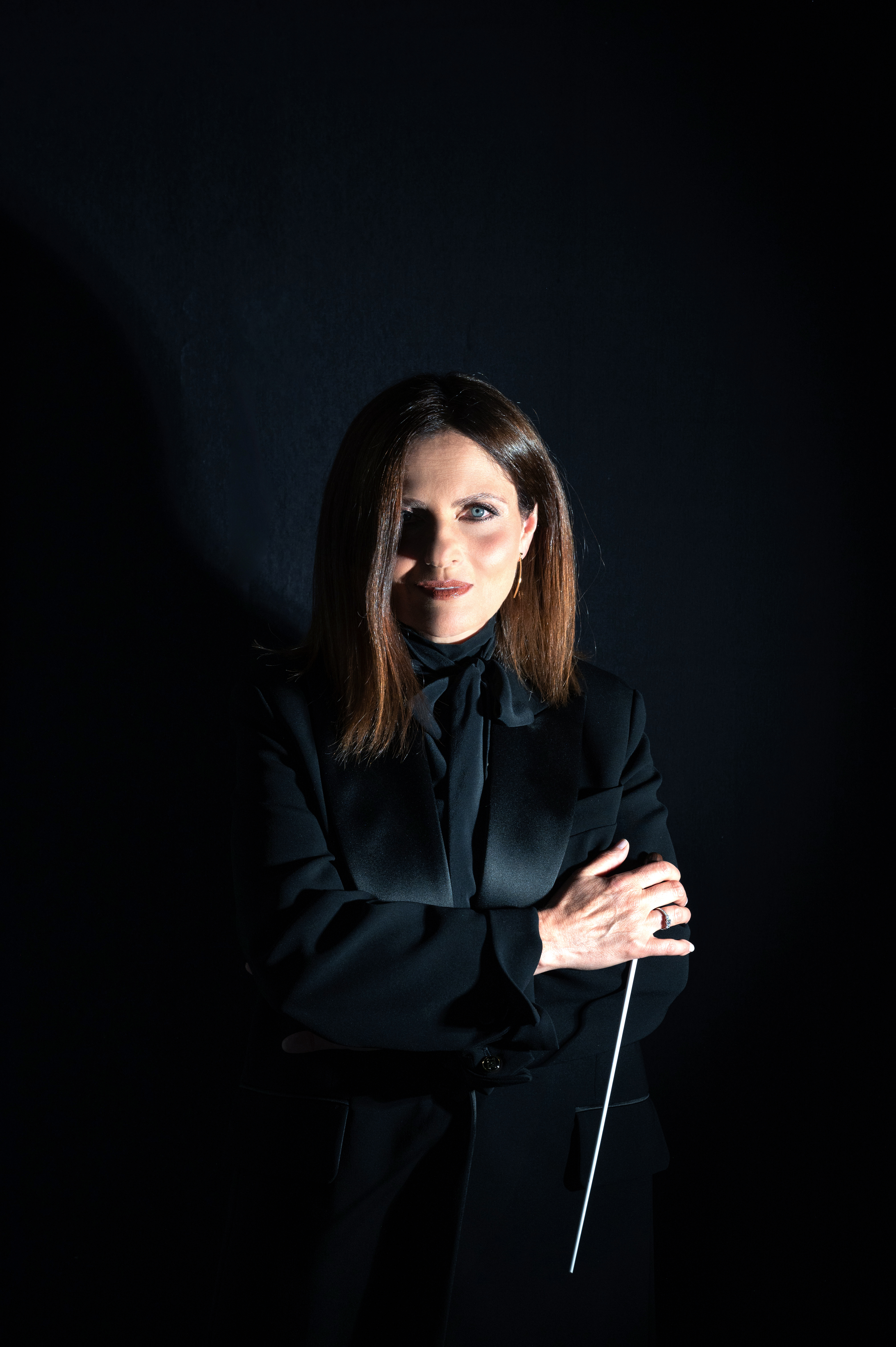The event is organized by All about Italy, the magazine and portal that has been promoting Italian excellence on major international markets for nearly 30 years now. It will be held on Thursday, December 12, 2024, at the prestigious Hercules Hall housed inside Munich’s Residence.
The event will feature a performance of Luigi Cherubini’s “Solemn” Mass for Prince Esterházy (1811). The music performance, however, is only part of the overall performance, as it will delightfully serve as a background sound to an exclusive performance of 25 Tableaux Vivants inspired by paintings by Caravaggio and other Italian masters. The scenic representations, performed by an Italian theater group, will be aimed at putting on show an all-embracing and elegant performance of music and visual scenes, and the lights and chiaroscuro effects so typical of the Caravaggio style.

With its 1,450 seating capacity, the Hercules Hall is the ideal venue for an event of such magnitude. Designed according to Florentine Renaissance criteria, this historic hall will undoubtably contribute to creating an evocative and immersive atmosphere.
The music performance shall be led by artistic and orchestra director Maestro Annunziata De Paola. With her extensive international experience, De Paola is acknowledged as a leading ambassador of Italian culture in Germany.
As publisher of All about Italy, Paolo Del Panta, has always endeavored to bring Italian culture abroad by hosting first-class events. In Del Panta’s own words, “the collaboration with Maestro De Paola is well tried”. “Thanks to an impressive musical and scenic ensemble, this year’s Gala Italia will once again stand out for its innovation and content exclusivity.” We have thus spoken with Maestro De Paola to find out more about this unique event.

How do you feel about conducting Gala Italia’s fourth edition in such a prestigious location as Munich’s Herkulessaal?
Herkulessaal is an extremely important hall. It has historically housed the Bavarian Radio Symphony Orchestra, and I have directed symphony concerts there quite a number of times. I am very pleased to be back there for this edition of the Gala Italia.
Can you tell us anything about how you came about to choosing Luigi Cherubini’s “Messa Solenne in D minor” for this event?
Ultimately, the decision to perform this very work stems from an in-depth reading of this very particular score by Luigi Cherubini. It has left lasting traces within me, as well as the awareness that I am dealing with an extraordinary work.
The enormous creative project, among the grandest for such musical literature, and the fact that every single part of the whole composition is extremely elaborated, which ultimately sets this Mass free from the requirements imposed by liturgy, make this into a concert piece in its own right. Cherubini is a man of the theater. In this work he grapples with expressive and dramatic elements which he skillfully handles by constantly placing them in such manner that disregards the expectations of the nineteenth-century listener. This, together with the composer’s intellectual nature of solid contrapuntal training, are the two structural aspects which had never been brought together before, and which contribute to making this score a unique case in the sacred literature of the time.
The “Solemn” Mass in D minor is the visionary and monumental result of a laborious and pondered osmosis between the ancient vocal lexicon of the accomplished Italian polyphonic tradition, and a modern symphonic orchestral language. This, ultimately creates a very unique conversational dynamic.
What makes this Mass particularly suited to represent Italian culture?
It is the result of a very unique artistic journey, that of Luigi Cherubini, which deepens its roots into a musical education typical of central and northern Italy between 1760 and 1784.
Cherubini was born in Florence and, throughout his life, he has maintained a strong Tuscan component, as well as the imprint of the evolved Florentine musical environment which had been the basis of his apprenticeship.
He completed his studies in Bologna and later in Milan, thus being exposed to a vocal writing that had then reached stylistic perfection with Palestrina’s polyphonic universe, with Padre Martini’s legendary library and with the then contemporary Italian opera.
He spent his first 24 decisive years in Italy before settling in London in 1784. Documents from the time trace him among the ranks of first violinists, grappling with performances of the symphonies by Haydn and Mozart.
By the time he moved to Paris in 1788, he had absolutely mastered the contrapuntal technique learned in Italy. In addition, Cherubini could also rely on his first-hand knowledge of a more broadly European sophisticated symphonic music. At the time, Paris was the capital of music. In no uncertain words, a composition that had not had a Parisian performance was to be considered nonexistent. Cherubini was appointed to very prominent roles. He became superintendent to the Chapel of Louis XVIII and director of the Paris Conservatory, and his works were performed throughout Europe. In Germany they fill the billboards of the most distinguished and important theaters, and the high regard in which the 19th century German musical civilization has always held Cherubini is well known. He was admired by Wagner, Brahms, Schumann, Mendelssohn and even Beethoven, who thought of him as “one of the greatest drama composers of the time.” Bringing this esteemed Italian composer’s music back to Munich means bringing it back to the German audience after an inexplicable, save for rare exceptions, centuries-long silence.

Munich is a crossroads of arts and culture. What does it mean for you to actually represent Italian excellence in a city with such an extensive tradition in music and culture?
Italian culture exists in Munich at its highest level. Even the architectural complex hosting our concert was inspired by the Florentine designs of Palazzo Pitti and Palazzo Rucellai. A crossroads of arts and culture calls for an educated interlocutor: the public.
I am addressing the audience of Munich directly. This concert’s challenge is to offer the unexpected, grasp and point out interrelations and contribute personal visions in order to ensure ideas continue to move forward.
How do you see events like Gala Italia contributing in promoting Made in Italy internationally?
Among the various expressions, i.e. segments, of contemporary Italian art, one is usually referred to as Made in Italy. Just like all other segments, be they ancient or contemporary, this too inevitably carries with it an in-depth knowledge that is rooted in the past. They all rely on knowledge and skills that are often centuries old, and have evolved throughout time. An achievement from Italy is never created on-the-spot, random, unnatural or artificial, but rather the result of authentic and in-depth knowledge capable of absorbing external elements but also inclined to innovation. Made in Italy is imbued with and represents knowledge that is handed down with expertise and tales that still need to be told in order for them not to be lost.
Narrating is part of what I have committed to in proposing and interpreting the music of Luigi Cherubini. In addition to this, with its concert series Gala Italia, organizer All About Italy very efficiently narrates the outcome of those creative parables that have reached their highest expression.
What are the artistic and technical challenges in directing a work of this magnitude, especially when taking into consideration the Caravaggio-inspired Tableaux Vivants that were integrated?
While on stage, I will be facing the Münchner Bachsolisten symphony orchestra, the Philharmonischer Chor München, which is one of the greatest choirs in Europe, and four solo singers. Of these singers, two are Germans, namely Stephanie Krug (soprano) and Christian Sturm (tenor), and they are well known to Munich audiences, and the other two, namely Eleonora Vacchi (mezzo-soprano) and Filippo Morace (bass), are wonderful Italian performers. To my back, I will have seven actors that will be bringing to life 25 paintings by Caravaggio and his school. The main characters of that stage, will be Music and Light, Cherubini and Caravaggio. Chiaroscuro as title of the show.
The Italian company “Teatri 35” and its 20-year long experience will be entrusted with the dynamics of putting together Caravaggio’s scenes in the atmosphere evoked by the music. Their performance will sweep the Munich audience into the impressive and mysterious play of light and shadow devised by Caravaggio himself.
The technical challenge will be that of synchronizing the more than 80 artists engaged on stage, as well as the direction of the lights which are a vital part of the event, on the rhythm dictated by Cherubini’s score. All this requires a tremendous amount of rehearsals. The other challenge is artistic, and will entail engaging the audience in the charm of a philologically accurate musical performance with unexpected and very impactful scenic elements.
What should the audience expect?
Unique emotions for the world’s very first performance ever.

